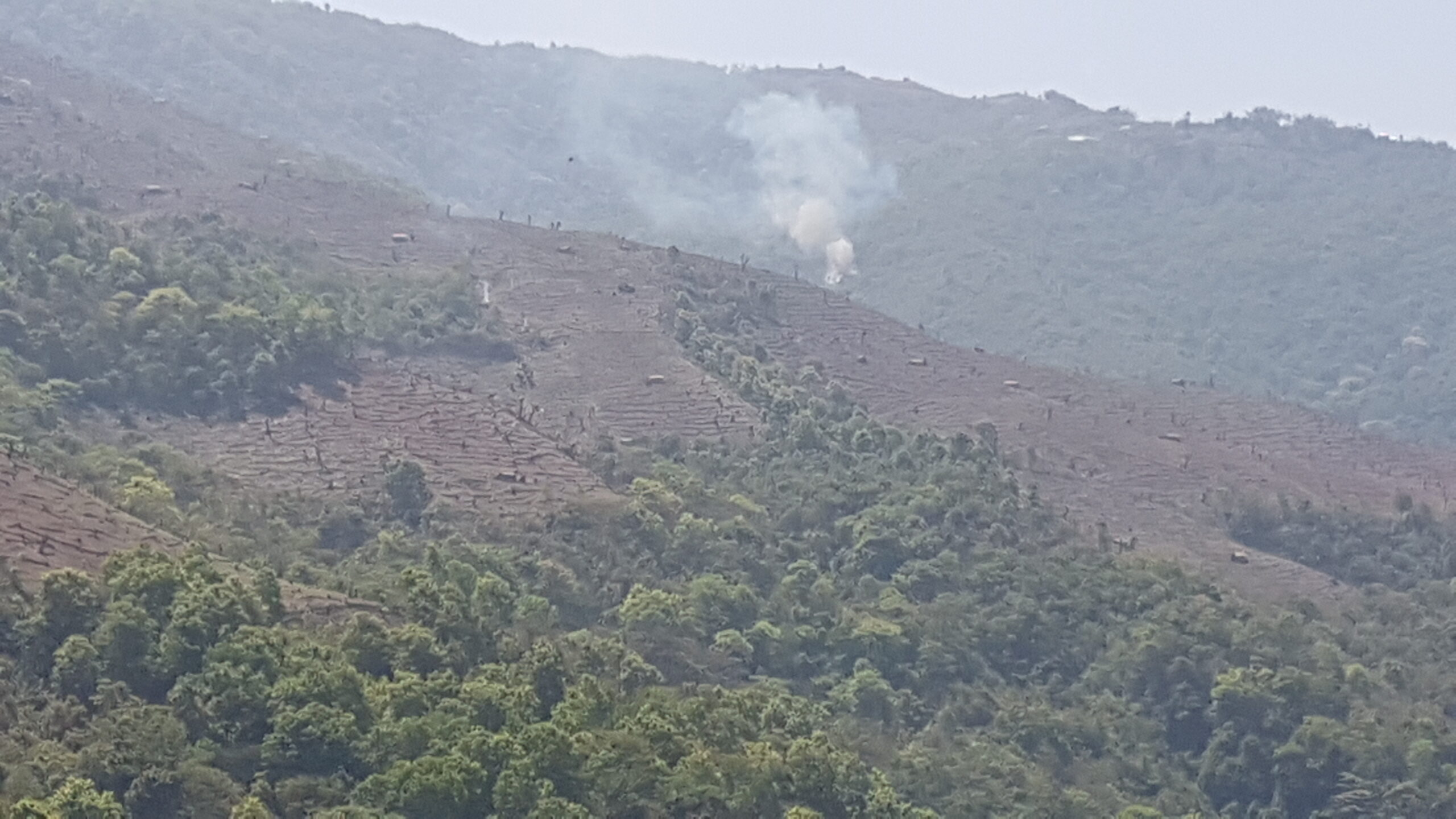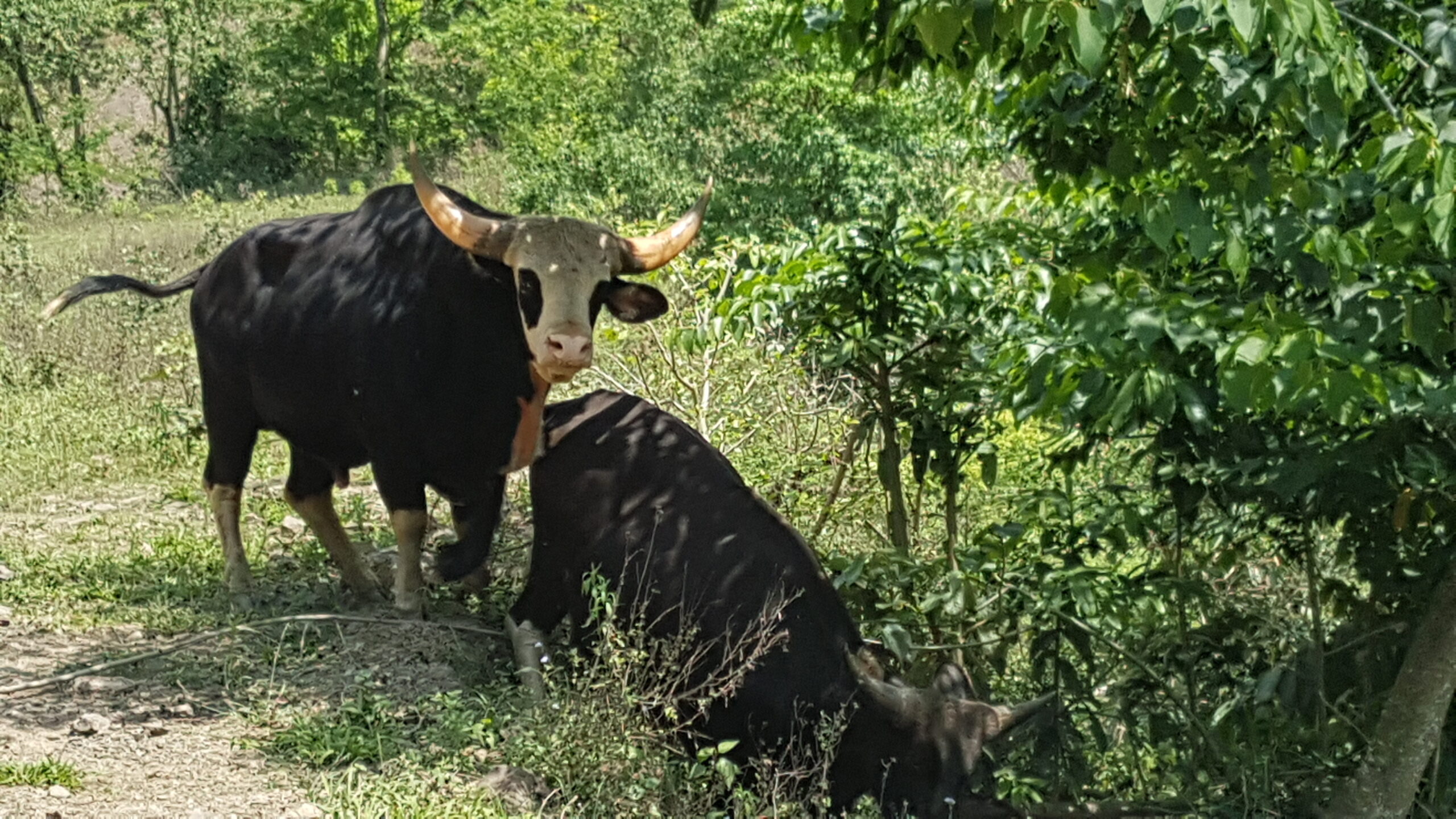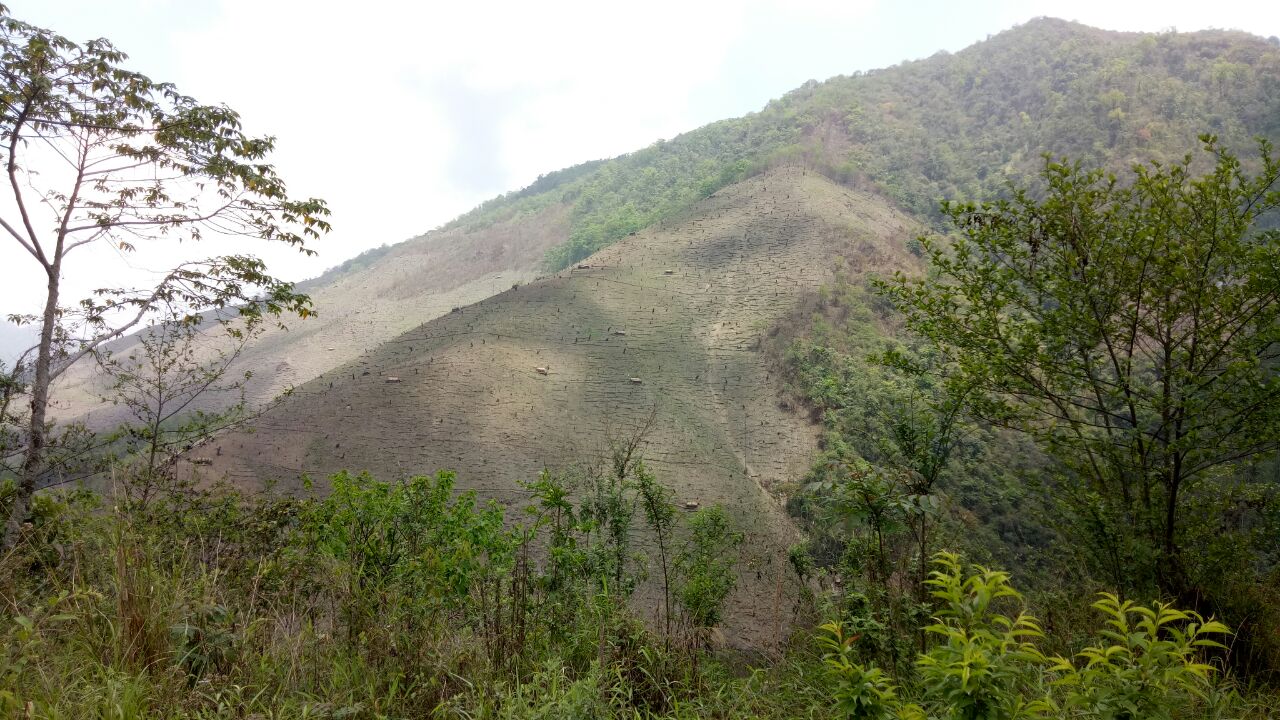Up in the hills some 1,524 meters above sea level the practice of slash and burn agriculture, popularly known as “jhum cultivation,” has carried on uninterrupted feeding several thousands of people in the Naga hills for generations. This unique practice of hill farming has in fact debunked myths about shifting cultivation (as jhum is also known) being harmful and environmentally destructive and has proven it to be one of the most resilient forms of agriculture in the highlands, which are mostly inhabited by indigenous communities.
But one such fascinating example of jhum cultivation practiced by the Khiamniungan Nagas since the beginning of the tribe across the eastern part of Nagaland State in India and the western part of Myanmar now faces a distinctive threat of being wiped out owing to a lopsided plan to secure an imaginary border by constructing physical fences and militarizing the hills. At the center of this extremely skewed plan is the government of Myanmar’s push to fence this imaginary line with support from its Indian counterpart, which is providing the armed military security to construct the fences.
An abortive attempt was made by the Myanmar government in 2016 to fence about three kilometers of the imaginary border that passes through the sleepy hamlets of Dan and Pangsha in the Noklak district of Nagaland. The fencing was halted after massive protests by locals of Dan, Pangsha and other villages, as well as several Naga organizations. But it could resume anytime and in the process convert 3,500 hectares of cultivable area – which are part of the jhum fields – into a no man’s land, while dividing Khiamniungan Naga families that inhabit these hills.
A recent visit to Dan brought to the fore the immense hardships the proposed fencing and the Indian security outpost is causing to locals. Unlike before, locals from both sides are not able to move freely to plow their fields.

“There are restrictions imposed on us if we move through the checkpoint area, and also, if we go through other passages, these Indian army men watch us through binoculars,” said Nyukha, the 80-year-old Khaimniungan Naga gaobura (village headman) of Dan.
The Khiamniungans are one of the major tribes among the Nagas. They are spread across the eastern part of Nagaland State in India and the western part of Myanmar. Khiamniungan literally means “source of great water or river,” (Khiam means water, Nui means great and Ngan means source). The nomenclature is said to derive from the biggest river of the land (Laang) and the Chindwin River downhill with which the former converges. Apart from the Konyaks, the Khiamniungan Nagas were considered to be the most ferocious headhunters before they converted to Christianity.
The Khaimniungan Nagas of Pangsha and Dan, who also identify themselves as the “Pangshas,” have 10 jhum fields, three on the Myanmar side separated by Dan mountain and seven on the Indian side. The cultivation follows a cyclical pattern and after the first year, the field is left fallow to be visited by the Jhumias (as local jhum farmers are known) again after the tenth year when the topsoil regenerates fully with full-grown trees. Usually rice (paddy), millet, maize, black gram, ginger, soybean and other vegetables are cultivated in a rotational format in the first year followed by only millet in the second year before the land is left to regenerate.
Incidentally, this unique method of hill farming creates a traditional economy that has sustained several Naga tribes for generations. Cultivating a plot of land – which is called Liu – goes through a process of endorsement by the village, after which each household can cultivate the plot of land given to them – known as Eiu.
Almost 2,000 households comprising old and new Pangsha and Dan villagers have an Eiu, which provides them all the essential food they need.
“We only have to buy salt and tea,” said Pape, the gaobura of New Pangsha. The same story is repeated by Jhumias from the Naga hills in Myanmar. They too have plots on both sides and follow a similar pattern of either a 10- or 11-year cycle.
The jhum fields are also closely interwoven with another age-old practice – that of rearing Mithun, a wild yak, which is used for its meat by the Khiamniungans. This herbivore, which thrives on a lot of salt, is found all across the Naga hills.

“Mithun is a big thing for the villagers. One Mithun may be owned by many people and the sale of it could help fund the education of two school-going children in a year. This animal is usually reared on the Myanmar side of the border where the forest is dense and more suitable,” says Hempao Lam, a local Khaimniungan church leader.
Thus now, if we are to understand why the likes of 80-year-old Nyukha and Hempao are so worried, it is simply because a lot is at stake. Not just the 3,500 hectares of cultivable land that will be gone, but a traditional lifestyle that has been sustaining people in these very difficult and challenging mountains will be destroyed forever.
Hempao puts it as, “It’s not just about the free movement regime, as even if we are allowed to move, we have to enter our names and will be at the mercy of the security forces. It will also badly impact our jhum patterns and result in devastating impacts on the ecology.”
Well-known environmentalist Amba Jamir, who also hails from Nagaland, is of the opinion that the fences will not only impact agricultural activities but also the entire land use and resource management regimes. In his words, “Shifting cultivation is about more than just food production; it involves a long forestry phase and all of this will be negatively impacted by physical fences.”
Explaining the jhum cycle, Jamir – who is the executive director of the Sustainable Development Forum Nagaland, says: “If the land is left to recover on its own, nature will take its own course. Having a fence will disrupt the natural movement of wild animals. That will be bad as the northeast is rich in biodiversity, as the region is located on the ‘transitional zone’ between the Indian, Indo-Malayan and Indo-Chinese bio-geographic realm.”

The environmentalist without mincing words makes a point when he says, “It’s about people and the natural world and this must be taken into consideration.” The worry according to him is that the traditional land domains of the communities in the border areas “will be severely interfered with.”
“It will impact their food production systems, their forest management systems and even reduce their hunting and gathering ranges. It could also negatively impact those clans or families that have land on the other side of the border,” Jamir warns.
Such land could be encroached on and claimed by others and could cause conflicts. Finally, such moves will not bring the local communities to be with any government that deprives them of their land and resources. These may further cause economic and political rifts.
He suggested that instead of erecting fences and setting up security outposts, the authorities on both sides should instill a sense of pride in locals’ resources, culture and institutions as a sure way of ensuring that they secure their rights and that of the nation. Indeed, there is merit in what he says that “rather than putting up physical boundaries at such extravagant costs, why can the place not be patrolled or monitored using technology?” Besides, using technology, education and services that respond to people’s needs and requirements will also ensure that there is loyalty, responsibility and national pride.
Hempao has five plots of land within the 3,500 hectares on the Dan side. But he is apprehensive that when he visits his fields in five years when the jhum cycle completes its 10-year cycle, the land may be out of bounds owing to security restrictions for him and his relatives. He is equally worried that with increasing sanctions on movement that there would be pressure on the jhum fields on the Indian side of Dan and cultivation cycles may be reduced to six or seven years.
“People may also start to cultivate where they have never cultivated before like forest areas in the higher reaches,” he says. “If Jhumias start going higher there will be a scarcity of water, but if cultivation areas in the lowlands are reduced, farmers will have no option and this beautiful ecosystem will be severely affected.”

As many as 244 villages, 44 on the Indian side and 200 in Myanmar, are facing the brunt of the fencing. “Over 10,000 people’s livelihood will be affected. The most hard-hit will be our fellow Nagas from Myanmar,” says 80-year-old P Behism, an adviser to the Khiamniungan Tribal Council (KTC)
However, Naypyitaw and New Delhi may be far from understanding these social dynamics on the ground. In a meeting held on March 9 in New Delhi under the chairmanship of the Special Secretary Ministry of Home Affairs India (border management-I division) on “effective implementation of the free movement regime,” the need was felt for restricting movement, especially vehicles, on the pretext that “movement of vehicles across IMB (imaginary boundaries) has no legal sanctity without bilateral agreement between India and Myanmar.” Perhaps this speaks volumes regarding the shortsightedness of the government on the issue which will only bring more problems than solutions.
The author is a former senior journalist who has worked for national and international news media in India and elsewhere. Currently he is a contributing editor for The Irrawaddy.

















